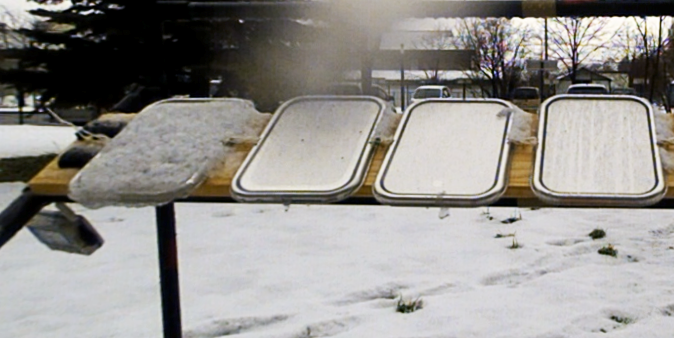New material could make aircraft deicers a thing of the past

Instead of applying a deicing agent to strip ice from an aircraft's wings before stormy winter takeoffs, airport personnel could in the future just watch chunks slide right off without lifting a finger. Scientists report they have developed a liquid-like substance that can make wings and other surfaces so slippery that ice cannot adhere. The slick substance is secreted from a film on the wing's surface as temperatures drop below freezing and retreats back into the film as temperatures rise.
The researchers present their work today at the 251st National Meeting & Exposition of the American Chemical Society (ACS).
The liquid-secreting materials the researchers developed are called self-lubricating organogels, or SLUGs. "The SLUGs technology has a host of formulations and applications, including in a gel form that can be encapsulated in a film coating on the surface of a wing or other device," says research director Atsushi Hozumi, Ph.D.
"We came upon this idea when we observed real slugs in the environment," Chihiro Urata, Ph.D., explains. "Slugs live underground in soils when it is daytime and crawl out at night. But we never see slugs covered in dirt. They secrete a liquid mucus on their skin, which repels dirt, and the dirt slides off. From this, we started focusing on the phenomenon called syneresis, the expulsion of liquid from a gel."
The gel and the liquid-repellent substance are held in a matrix of silicone resin. The mix is cured and applied to a surface as a nearly transparent and solid film coating, Urata explains. Both Urata and Hozumi are at the National Institute of Advanced Industrial Science & Technology (Japan).
The team examined the anti-icing properties of several types of organogels under tests at various temperatures, Urata says. The discovery of the material's thermo-responsive secretion properties was an unexpected surprise. The tests also showed that the secretion was a reversible process. The syneresis gradually starts when temperatures fall below freezing. So although ice can still form, it cannot adhere to the surface and it slips off. Once the temperature rises above freezing, the liquids return back to the film.
Urata sees potential applications for SLUGs beyond aircraft and singles out antifouling coatings in packaging, paints, ship bottoms, metal molds and more.
Their research is currently focusing on increasing the transparency of the SLUG's coating, Urata says. "We are planning a short-term project to apply the coating where transparency is essential. For example, we are just beginning a project to field-test the durability and visibility of SLUGs coating on signage in Japan's northern counties."
More information: Anti-Stick Coatings Using Self-Lubricating Organogels (SLUGs), the 251st National Meeting & Exposition of the American Chemical Society (ACS), 2016.
Provided by American Chemical Society




















